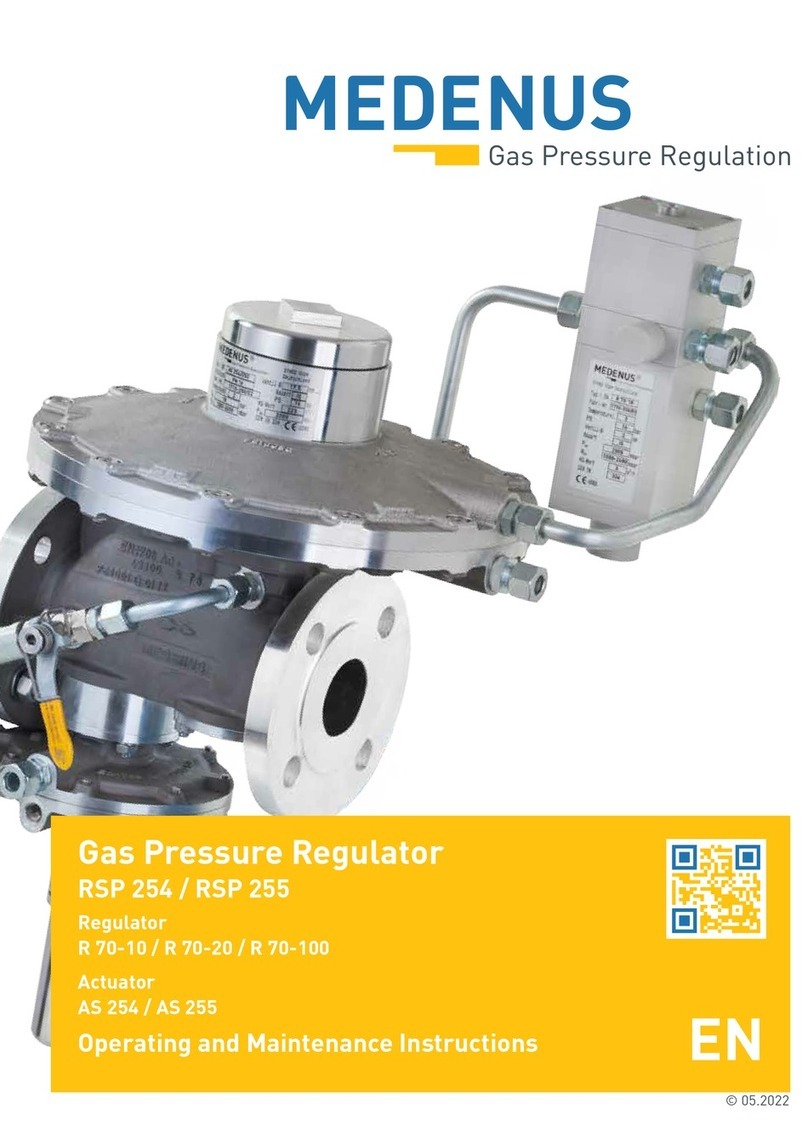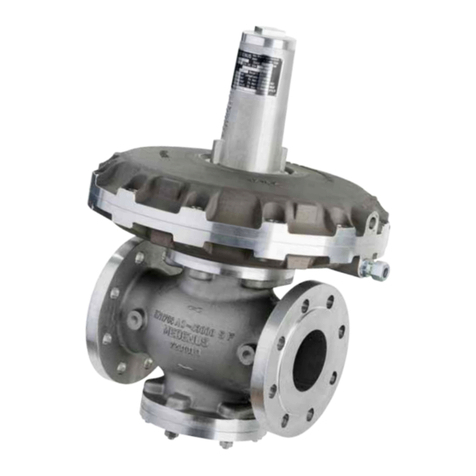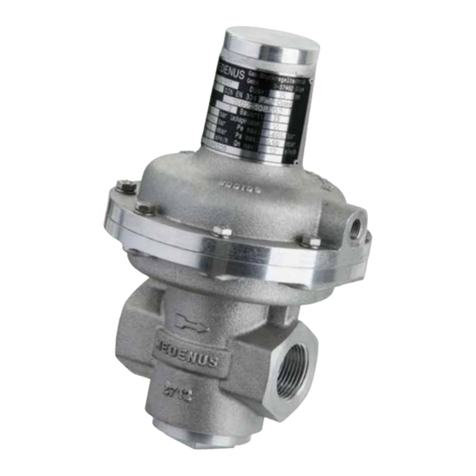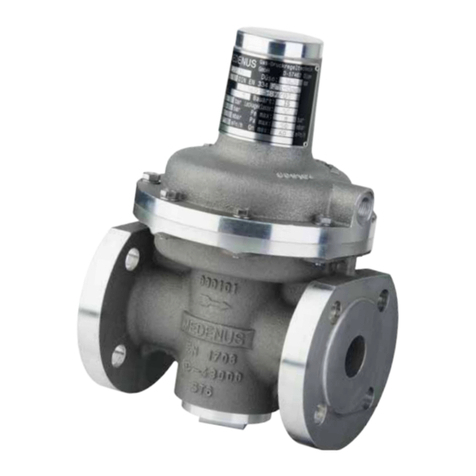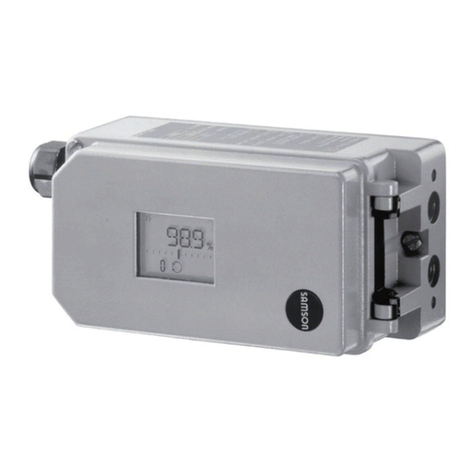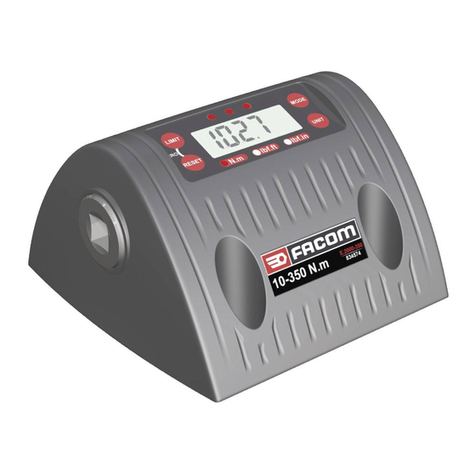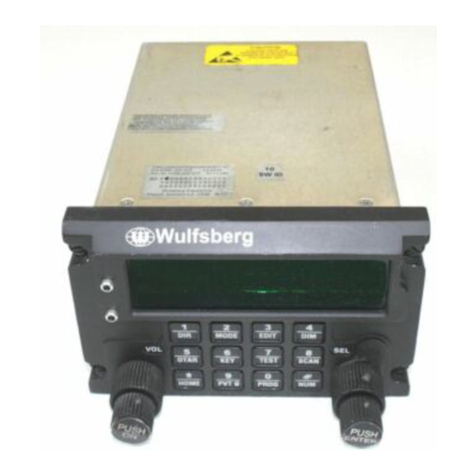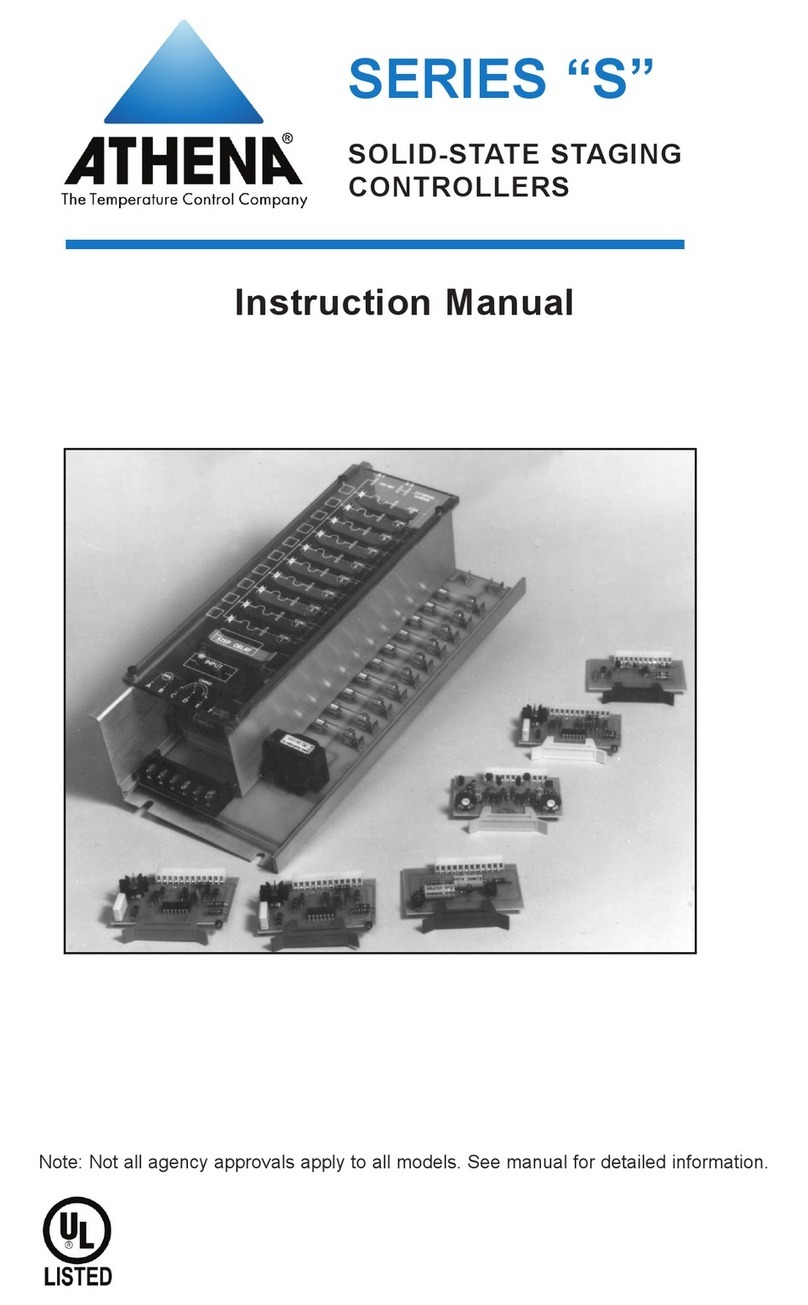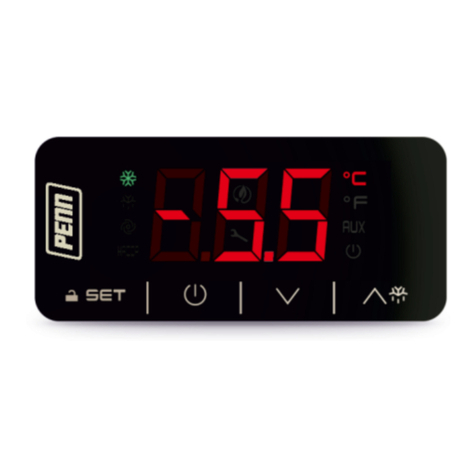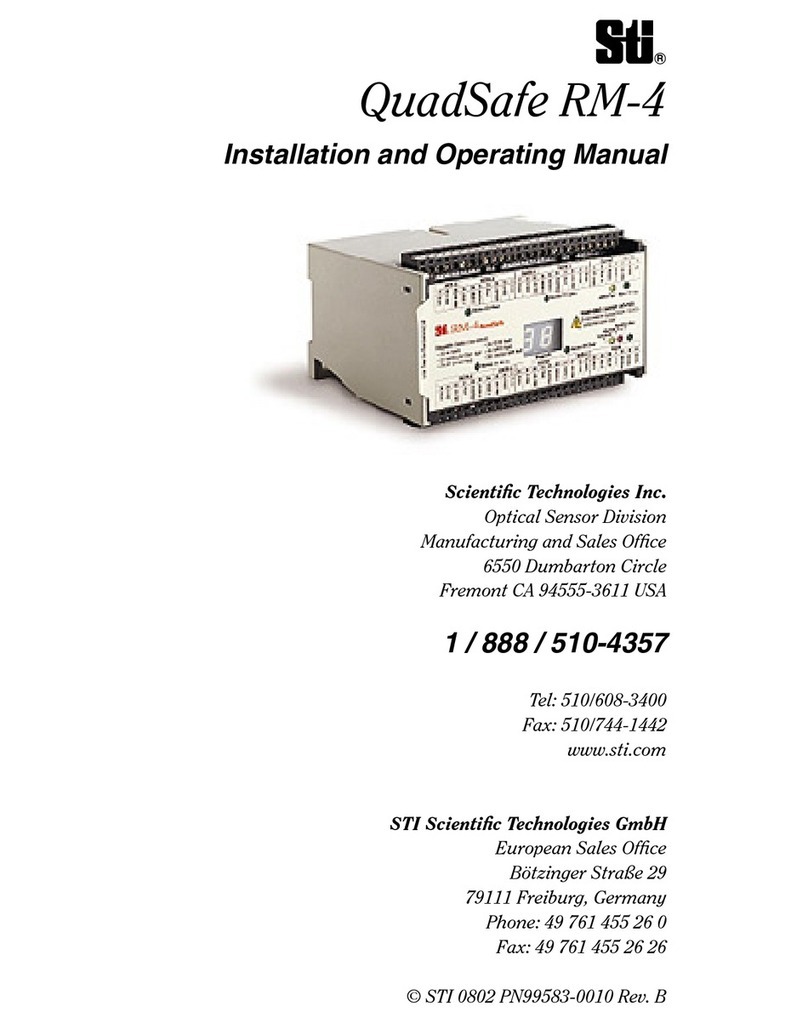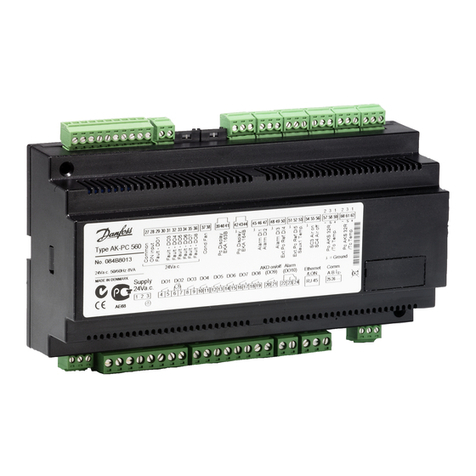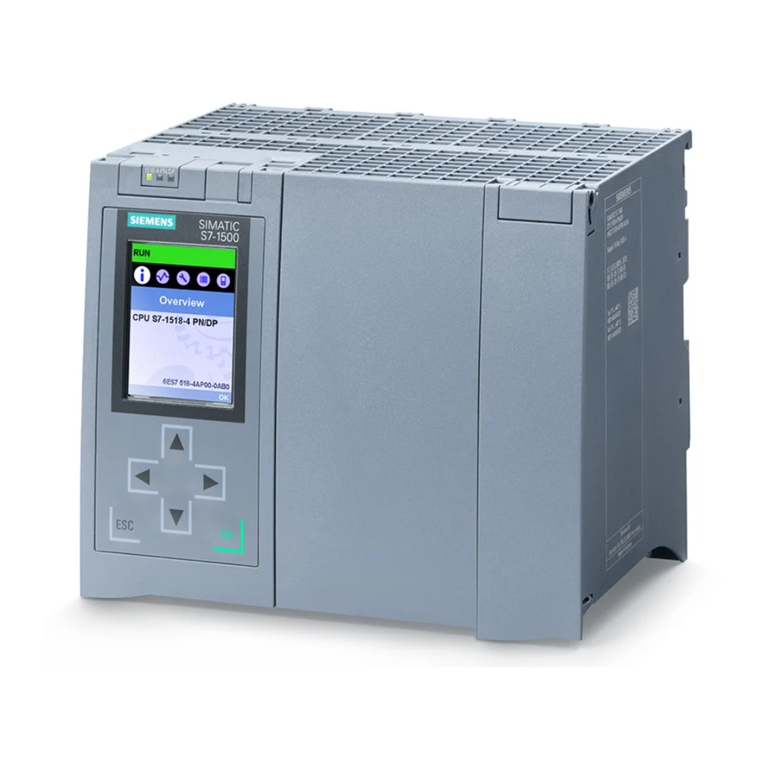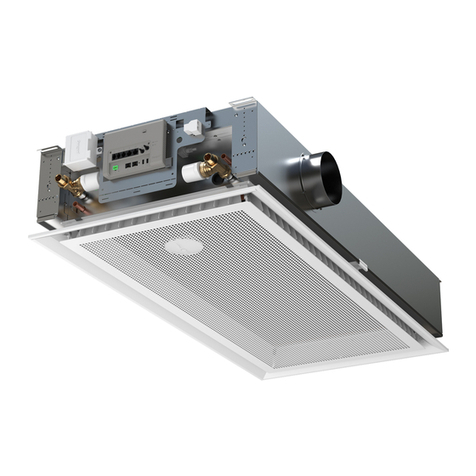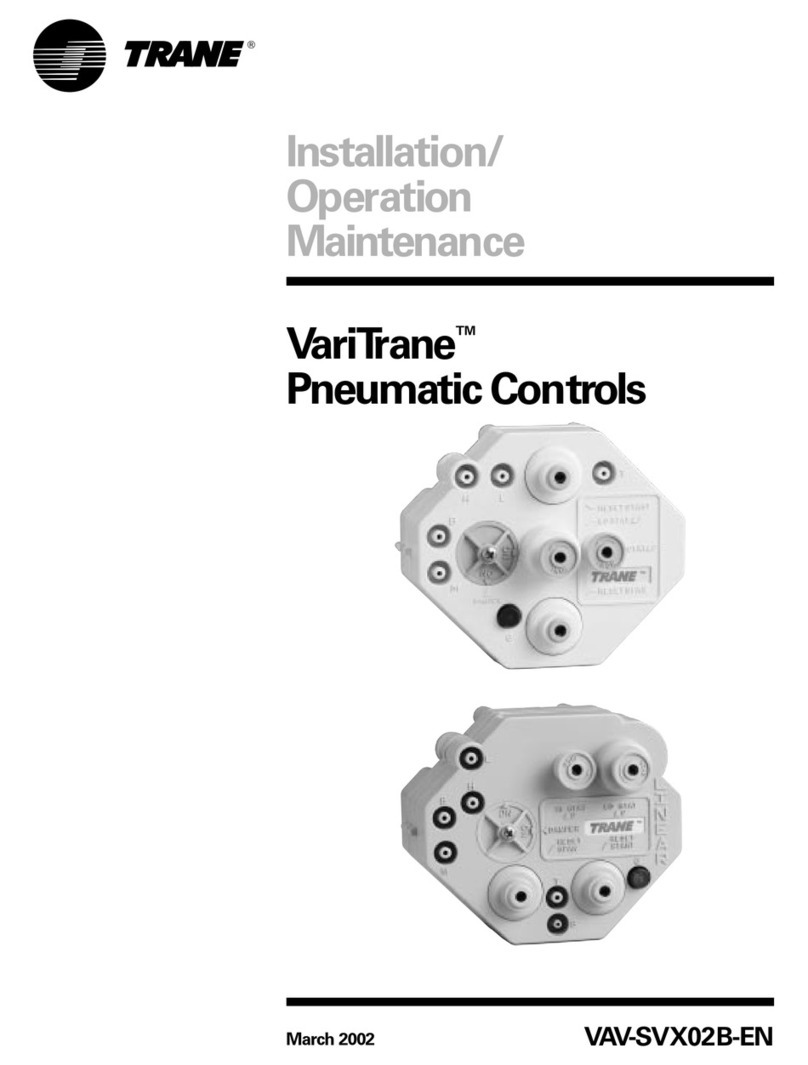MEDENUS RS 250 Manual

© 11.2023
Gas Pressure Regulator
RS 250 / RS 251
Accessories / Options
Operating and Maintenance Instructions

Subject to technical modifications! Reprint prohibited!

Design of the gas pressure regulator RS
Adjusting screw
Spring plate
Control spring
Diaphragm cover
top
Regulator
main diaphragm
Impulseconnection
Actuator
housing
Sealing cap
Breather connection
Intermediate diaphragm
Diaphragm cover
bottom
Spring cap
Spindle
Diaphragm assembly
Actuator
Safety shut-off valve
(SSV)
Gas pressure regulator RS250
with integrated SSV indirectly acting
Piston
Regulator valve seat
Regulator cone
Valve plate
Pressure nut
Cover
SSV
valve seat
Disk
Nut
Diaphragmplate
top
Pressure plate
Bypass valve
Diaphragm plate
bottom
You will find an illustration with high-pressure
spindle and safety diaphragm on page 28

Table of Contents
1 General Information 6
1.1 Warranty and Liability 6
1.2 Symbols, Notes 7
1.3 Terms, Abbreviations 7
2 Application, Characteristics 8
2.1 Application 8
2.2 Characteristics 8
2.3 Types of Models (Options) 8
3 Avoidance of Foreseeable Misuse 8
4 Safety Instructions 9
4.1 Hazards of Handling the Device 9
4.2 Personnel Requirements 9
4.3 Country-Specific Requirements 9
4.4 Handover of the Operating and Maintenance Instructions 9
4.5 Safety in Operation 10
4.6 What to Do in Case of Danger 10
5 Responsibility of the Operator 10
6 Transport, Storage and Packaging 11
6.1 Transport 11
6.2 Storage 11
6.3 Packaging 11
7 Mounting and Commissioning 12
7.1 Safety Instructions and Preparation 12
7.2 Mounting 12
7.3 Leakage Test (Test for External Leakage) 14
7.4 Initial Commissioning / Recommissioning 15
7.5 Diaphragm Assembly Setpoint Spring Table 17
7.6 SSV Set point Spring Table - Control Device 19
7.7 Decommissioning 21
8 Maintenance 21
8.1 Maintenance Plan 21
8.2 Maintenance Procedure 22
8.3 Table of Screw Tightening Torques MA23
8.4 Lubricants Table 23
8.5 Screw Retention 23
9 Troubleshooting 24
9.1 Gas Pressure Regulator 24
9.2 Safety Shut-Off Valve 25
10 Replacement and Disposal 26
11 Spare Parts 27
11.1 Spare Parts Drawing RS 250 / RS 251 DN 25 - DN200 27
11.2 Optional Spare Parts Drawing 28
11.3 Parts for Maintenance Work 29
Main Diaphragm and O-Ring 29
Intermediate Diaphragm 29
Valve Plate 29
Valve Plate SSV / Diaphragm SSV 30
O-Ring and Sealing Ring Sets 30
Safety Diaphragm 31

12 Accessories / Options 33
12.1 Noise Reduction 33
12.2 High-Pressure Spindle 35
12.3 AV Breather Valve 36
12.4 RSD2 Restrictor Valve 37
12.5 Signal Transmitter/ Reed Contact 38
12.6 Inductive Signal Transmitter 41
12.7 Baffle Plate / Restrictor Plate 43
12.8. SSV manual and remote release 45
12.9. SM Safety Diaphragm 47
13 Tools 48
13.1 Brace and bit with 4-jaw chuck 48
13.2 SSV Tightening Tool 48
Declaration of Conformity 49
Notes 50

6
© 11.2023
1 General Information
The personnel entrusted with installation, operation or maintenance of the gas pressure regulator must
have completely read and understood beforehand the following documents:
• Gas Pressure Regulator RS 250 / RS 251 Product Information
The product information contains technical data, dimensions and a description of the design and the mode of
operation.
• Gas Pressure Regulator RS 250 / RS 251 Operating and Maintenance Instructions
This document allows safe and efficient handling of the device and contains information on assembly,
commissioning, maintenance, troubleshooting, and repair according to regulations.
It is an integral part of the scope of delivery of the device, must be kept in close proximity of the device and
must be readily accessible to personnel at any time.
The basic prerequisite for safe working is compliance with all safety instructions and instructions for action
given in this manual. Accordingly, the information and instructions must be observed when working on the
device or on the gas line. In addition, the local occupational safety regulations and general safety regulations
for the application range of the device shall apply.
The figures in these instructions are provided for basic understanding and may differ from the actual design.
The contents of these instructions are protected by copyright. They may be used as part of operating the
device. Any other use and/or reproduction is not permitted without prior authorization by MEDENUS Gas-
Druckregeltechnik GmbH.
1.1 Warranty and Liability
Claims under warranty or liability for personal injury and material damage are generally void
if one or several of the following conditions are not observed:
• Work on the device during the warranty period may only be performed in consultation with the manufacturer
• Designated use of the device in accordance with the established conditions of use
• Proper installation, commissioning, operation and maintenance of the device
• Operation of the device with properly installed and functioning safety devices only
• Operating and maintenance instructions of the device or of the system
• Compliance with the maintenance instructions
• Properly performed repairs
• Supply lines without defects
• The use of original MEDENUS©spare parts and lubricants listed in these instructions
• Force majeure
It is generally prohibited
• To perform constructive modifications on the device
• To keep using the device despite the detection of a defect

7© 11.2023
1.2 Symbols, Notes
The instructions contain safety instructions marked with symbols to indicate possible consequences in case of non-
observance:
1.3 Terms, Abbreviations
Terms and abbreviations are explained below:
DANGER
Note
ATTENTION
This combination of symbol and signal word indicates a potentially hazardous
situation which, if not avoided, may result in minor or moderate injury, damage
to the device, the breakdown of the system, and material or environmental
damage.
This combination of symbol and signal word indicates an imminent hazardous
situation which, if not avoided, will result in death or serious injury.
This signal word highlights useful tips, recommendations, and information for
efficient and trouble-free operation.
ATC Acceptance test certificate
DN Nominal width
GPR Gas pressure regulator
HDS High-pressure spindle
MAScrew tightening torque
MOP Maximum operating pressure
in a system
pdOutlet pressure
pds Setpoint of the
outlet pressure
SSV Safety shut-off valve
SRV Safety relief valve

8
© 11.2023
2 Application, Characteristics
2.1 Application
Gas pressure regulator (GDR), direct-acting (operating without auxiliary power), for systems acc. to
DVGW work sheets G 491 (A) and G 600 (A) (TRGI)
Particularly suitable for dynamic regulation sections (e.g. gas fireplaces,
natural gas supply systems, burner circuits, gas motor operation)
Can be used as an equipment component on gas consumption facilities as defined in Regulation (EU) 2016/426.
Can be used for the gases defined in DVGW work sheet G 260 / G 262 and neutral non-aggressive gases.
(other gases on request)
2.2 Characteristics
• Integral pressure-tight model (IS)
• Gas pressure regulator with integrated SSV
• Easy maintenance through replaceable SSV functional units (modular design)
• SSV functional class, optionally A or B
• Open-air model
3 Avoidance of Foreseeable Misuse
2.3 Types of Models (Options)
• Oxygen model
• Without SSV
• noise reduction
• SSV manual release
• SSV electromagnetic remote release when power is applied or in case of power failure
• electric position indicator SSV “Closed” via inductive proximity initiator or via Reed contact
• Diaphragm assembly with integrated leakage gas quantities SRV or safety diaphragm
• AV 530 breather valve (SSV diaphragm rupture protection)
• throttle valve (RSD2) for impulse line of the regulator
• Coating with epoxy resin in RAL colours
• The regulators must not be used to control liquids.
• The regulators must not be used in temperature ranges below -20°C or above 60°C.
• The regulators must not be used for pressure ranges higher than the pressure “PS“ indicated on the nameplate.
• The regulators may only be used for the gases specified under item 2.1 Application in these operating
instructions.
Other gases, such as oxygen or hydrogen, must be explicitly stated on the nameplate.
Please consult the manufacturer before use.
• The regulators must not be used in high-temperature areas (HTB) without an upstream HTB fuse.

9© 11.2023
4 Safety Instructions
National accident prevention regulations and the system operator's safety regulations are not superseded by these
operating and maintenance instructions and must be taken into consideration with priority (in Germany, see, among
others, DVGW work sheets G 600, G 459/II, G 491 and G 495).
When performing work on the device, the current general and specific safety regulations must be observed.
The application limits of the device with respect to the medium, operating pressure and operating temperature can be
found on the nameplate affixed to the device or on the acceptance test certificate.
Using the device under different operating conditions must be agreed upon in consultation with
MEDENUS Gas-Druckregeltechnik GmbH.
The mechanical components of the device do not have any potential ignition sources of their own nor any hot surfaces
and are thus not covered by the scope of 2014/34/EU (ATEX). The electronic accessories used comply with the ATEX
requirements.
4.1 Hazards of Handling the Device
MEDENUS©devices conform with current standards and directives, the recognized technical rules
and the recognized safety rules.
However, improper use can result in hazards to the user or to third parties. This can also result in damage to the device
or to the system.
This is why the device may only be used:
• in accordance with its designated use
• in perfect condition
• while observing the notes given in these operating and maintenance instructions, and inspection and
maintenance regulations, which apply to the functioning and safety of the overall system.
Malfunctions or faults must be eliminated immediately.
4.2 Personnel Requirements
The device may only be mounted by qualified personnel.
Only authorized personnel with the required qualification is allowed to perform settings or repairs on the device.
4.3 Country-Specific Requirements
The rules and regulations applicable at the place of use with respect to
• gas lines, installation of the gas system,
• gas supply,
• work on the gas system,
• accident prevention
must beobserved and complied with.
4.4 Handover of the Operating and Maintenance Instructions
The supplier of the system shall hand over these operating and maintenance instructions to the operator of the system
no later than during commissioning and training
of the operating personnel with the reminder to carefully store these instructions.

10
© 11.2023
4.5 Safety in Operation
The device may only be used when all protective devices on the device or in the system are fully functional.
The device must be inspected by a representative of the manufacturer or by a qualified person for externally visible
damage and for proper functioning at least once a year.
A more frequent inspection may become necessary, depending on the system conditions.
4.6 What to Do in Case of Danger
Information on what is to be done in case of danger and in case of accidents can be found in the respective operator's or
specialist companies' work instructions.
5 Responsibility of the Operator
Operator An operator is a person who operates the device himself/herself for commercial or economic purposes
or leaves it to a third party for use/application and is legally responsible for the safety of the user, the
personnel or third parties during operation.
The device is used in the commercial sector. The operator of the device is therefore subject to the legal
obligations for occupational safety. In addition to the safety instructions contained in these instructions,
the established maintenance intervals must be observed, taking into account the respective national
standard (alarm and hazard prevention plan).
In particular, the following applies:
• The operator is obliged to perform work on MEDENUS©devices during the warranty period only
after consultation with the manufacturer. Otherwise the claims under warranty will become
void.
• The operator must obtain information on the current occupational safety regulations and
determine additional hazards resulting from the special work conditions at the place of use
of the device in a risk assessment. The operator must implement the results in the form of
operating instructions for the device.
• During the entire time of use of the device, the operator must check whether the operating
instructions issued by him/her conform to the current state of the regulations and, if necessary,
adapt them.
• The operator must clearly regulate and define the responsibilities for installation, operation,
troubleshooting, maintenance and cleaning.
• The operator must ensure that all persons handling the device have read and understood these
instructions. In addition, the operator must train the personnel at regular intervals and inform
them about the hazards.
• The operator must make available to the personnel the required protective equipment and
oblige them to wear the required protective equipment.
• Moreover, the operator is responsible for the device always being in technically perfect condition.
Therefore, the following applies:
• The operator must make sure that the maintenance intervals described in these instructions
are observed.
• The operator must have all safety devices checked regularly for functionality and completeness.
Operator
duties

11 © 11.2023
6 Transport, Storage and Packaging
6.1 Transport
The device is delivered with flange protection caps. They must be removed prior to installation.
Make sure that the device is transported horizontally using suitable lifting gear. The device must be
handled carefully and secured against impacts and knocks.
In case of transport damage, we will require the following information from the nameplate affixed to
the device:
• Device type
• Device model
• Year of construction/fabrication number
Note
6.2 Storage
Equipment and spare parts must be stored under the following conditions:
• Do not store outdoors.
• Store in a dry and dust-free location.
• Store on a flat surface.
• Do not expose to aggressive media.
• Do not expose to ozone or ionizing radiation.
• Do not store adjacent to direct heat sources.
• Avoid mechanical vibrations.
• Storage temperature: 0 to 25°C.
• Relative air humidity: < 55 %.
Spare parts:
• Components susceptible to corrosion must be provided with a suitable preservative.
• Do not store O-rings and seals for more than 5 years even if stored properly.
• Spare parts must be stored in their original packaging until use.
Storage period for devices:
• Storage of the device for up to one year:
Store the gas pressure regulator in its original packaging and original condition at the time of supply. All
protective caps of the device must remain mounted.
• Storage of the device for more than 1 year (e.g. as a spare device):
Store the device in its original packaging and its original condition as delivered and check it for damage once
a year. Check the housing surface for dirt, damage and corrosion. If necessary, clean all external parts. After
5 years, all O-rings and seals must be replaced.
6.3 Packaging
• The individual packaged items have been packaged in view of the transport conditions to be expected.
• The symbols on the packaging must be observed during transport and storage.
• Only environmentally friendly materials have been used for packaging.
• The packaging is designed for protecting the individual components from transport damage, corrosion and
other damage until mounting. This is why the packaging must not be destroyed and only removed just prior to
mounting.

12
© 11.2023
7 Mounting and Commissioning
7.1 Safety Instructions and Preparation
Prior to starting work on pressurized components:
• Close all connections to the gas line.
• Depressurize all pressurized components. Also discharge residual energies.
• Defective components charged with pressure in operation must be replaced immediately by
an appropriate expert.
Prior to starting work, ensure sufficient clearance for mounting.
Before installing the device, check whether the performance data (nameplate) and the scope of
delivery coincide with the order or the system data, i.e., make sure that the provided devices are
suitable for their intended purpose. In particular, the inlet pressure of the system must be lower than
the maximum allowable pressure of the device.
Direct contact of gas valves and fittings, i.e., the control system, with hardening masonry, concrete
walls or floors is not permitted. Provide suitable supports, working materials and protective
equipment. The minimum distances to the masonry etc. must be carried out in acc. with DVGW
worksheet G491 / G600.
Take into account the minimum clearances for maintenance as stated in the product information.
Before installing the device in the pipeline, check whether a shut-off device that interrupts the gas
flow supply to the device has been mounted upstream and downstream of the device to be installed.
Prior to commissioning, make sure that all installation work has been carried out and completed
in accordance with the data and information given in these instructions and that no unauthorized
persons stay in the danger zone.
Important information:
If a safety relief valve SL10 is used, the switching point of the SRV must be approx. 20% below the
DANGER
Note
Note
DANGER
Note
Note
Note
Note
7.2 Mounting
• Remove the packaging, flange protection caps and shipping braces.
• Check the device for wear and damage.
• Make sure that the device is installed free of stress (see DVGW info gas no. 19).
Make sure to observe the direction of flow i.e., the arrow on the housing must
point in the direction of flow.
• All breather lines (items 7.04 / 7.07) must be vented to the outside atmosphere.
Gas pressure regulators Flange tightening torques
Screw size Screw tightening
torque MA
Screw size Screw tightening
torque MA
M6 8Nm M12 60Nm
M8 18Nm M16 120Nm
M10 36Nm M20 190Nm
M12 62Nm
Tightening torques MA*)
*) For the assembly of the flange connections, the maximum torques specified by the flange and gasket manufacturers
must be observed. The values given here are maximum values in relation to the fitting.

13 © 11.2023
7.01 7.02 7.03
7.06 7.07 (A) 7.08 (I)
7.04 (A)
7.05 (I)
7.10
7.11 7.127.09 7.13
7.28
• Breather lines (items 7.04 / 7.07) may not be required
if breather valves or safety diaphragms are being used.
• The measuring lines (items 7.05 / 7.08) must be connected in a pipeline section with a steady flow. There must
be no installations that cause flow interference such as shutters, expansions, manifolds, junctions, isolation
valves etc. directly upstream and downstream of the measurement point.
• The maximum flow rate at the measuring point must not exceed 25 m/s, depending on the system conditions.
• The maximum flow rate at the measuring point must not exceed 25 m/s, depending on the system conditions.
• In certain system circuits, such as gas control systems for gas motors and in gas burners, higher flow rates
than 25 m/s are also possible. Please contact us.
• The measuring line must be connected to the pipeline or to the measuring point separately, laterally or at the
top for each device (1 gas pressure regulator (item 7.03); 1 integrated SSV (item 7.06)).
• The SSV measuring line (item 7.08) must always be connected upstream of the first shut-off valve (item 7.13)
on the outlet side in such a way that it cannot be shut off.
• The SSV (item 7.06) can be rotated to any position.
Measuring
point
Measuring
point
Fig. 7.1
Filter
DF100
Anschluss
SAV Öffnungs-
durchmesser /
connection
SSV opening diameter
(mm)
Nennweite /
nominal
size
Abmessung /
dimension (mm)
Anschluss Regler /
connection Regulator
Anschluss Regler
Öffnungsdurchmesser /
connection Regulator opening
diameter (mm)
Anschluss SAV /
connection SSV
DN X Y Z
Impuls-
leitung /
impulse
line (I)
Atmungs-
leitung /
breathing
line (A)
Impulsleitung / impulse line (I)
Atmungsleitung / breathing line (A) Impuls-
leitung /
impulse
line (I)
Atmungs-
leitung /
breathing
line (A)
Impuls-
leitung /
impulse
line (I)
Atmungs-
leitung /
breathing
line (A)
Diaphragm cover Ø
160 205 275 330 385 390 485
RS250
25 328 269 230
RP 3/8" RP 3/8“ 3 4 6 8
RP 1/4" RP 1/4" 2 3
50 348 282 230 RP 1/4" RP 1/4" 2 3
80 406 305 310 RP 1/4" RP 1/4" 2 3
100 421 315 350 RP 1/4" RP 1/4" 2 3
150 716 386 480 RP 3/8" RP 3/8" 4 2
200 784.5 400 600 RP 3/8" RP 3/8" 4 2
RS251
50 406 305 310 RP 1/4" RP 1/4" 2 3
80 644 311 410 RP 1/4" RP 1/4" 2 3
100 716 386 480 RP 3/8" RP 3/8“ 4 2
Connection
X
Y
Z
I
A
I
A
R/RS 250/251 Ball valve
Ball valve

14
© 11.2023
U
S
G
a
s
-
D
r
u
c
k
r
e
g
e
l
g
e
r
ä
t
D
E
N
U
S
G
a
s
-
D
r
u
c
k
r
e
g
e
l
g
e
r
ä
t
7.10
7.09
7.10
7.09
For Germany:
According to DVGW work sheet G 491, the fully assembled system must be subjected to a leakage test with air or an inert
gas at the installation site, using 1.1 times the maximum operating pressure of the system (MOP).
An exception is the room between the actuator and the first shut-off valve on the outlet side. This room must be checked
using the test pressure corresponding to the maximum permissible pressure in the system in case of a malfunction (1.1
MOPd). In this test, all detachable connections must be checked using a foaming agent.
In direct-acting devices (without power supply), the outlet pressure acting on the actuator (limited by
the SSV) should not be more than 0.5 bar above the set setpoint. This should be taken into account
when specifying the response pressure of the upstream SSVs.
(Configuration, see p. 20)
For other countries:
The relevant national and international standards shall apply.
Procedure
• Close the ball valve upstream of the valves and fittings (item 7.01).
• Close the downstream shut-off devices (item 7.13) (ball valve,
solenoid or pneumatic valve).
• Depressurize the system (item 7.11).
• If there is a SRV (safety relief valve) in the controlled section and
the test pressure is higher than the relief pressure of the SRV (item
7.09), the line upstream of the SRV (item 7.10) must be closed.
• Always increase the test pressure slowly and steadily.
7.3 Leakage Test (Test for External Leakage)
The devices are subjected to a strength and leakage test ex works at MEDENUS Gas-Druckregeltechnik GmbH.
The leakage test in the fully assembled system must be performed prior to commissioning and following maintenance
work.
For the external leakage test in the fully assembled system, the following applies:
While doing so, you must ensure:
Pressure in outlet chamber (item 7.12) ≤pressure in inlet chamber (item
7.02)
Pressure build-up always from the inlet side (inlet chamber)
Pressure reduction always from the outlet side (outlet chamber)
• After leakage test:
Open the ball valve in the SRV line (item 7.10) again.
Note
ATTENTION
Note
Fig. 7.2
Fig. 7.2.1

15 © 11.2023
7.17
7.16
7.19
7.18
7.14
7.15
7.14
7.4 Initial Commissioning / Recommissioning
Initial commissioning of the system components shall be carried out by the operator. For commissioning, please refer to
the documents listed under item 1 “General Information” and the system operator's work instruction.
The devices delivered by MEDENUS Gas-Druckregeltechnik GmbH are factory-set to the operating data specified by the
customer. This data is listed on the Acceptance Test Certificate (ATC)* and the type plate.
Prior to commissioning of the system, a functional test must be performed on the gas pressure
regulator (GPR), if applicable, and the safety shut-off and safety relief valves.
Procedure (fig. 7.1)
• Close the ball valve upstream of the valves and fittings (item 7.01).
• Close the downstream shut-off devices (item 7.13) (ball valve, solenoid or pneumatic valve).
• Depressurize the system (item 7.11).
• Close the venting ball valve (item 7.11).
• Slowly open ball valve upstream of the valves and fittings (item 7.01) (pressure increase approx. 0.5 bar/s).
If the inlet shut-off device is equipped with a bypass, the latter must be slowly opened for pressure
compensation as step 1. This is followed by slowly opening the inlet shut-off valve which will close the
bypass. The same is true of the outlet shut-off valve.
• Check the inner leakage of the SSV (item 7.06) by reading the pressure gauge
installed downstream of the GPR (item 7.12).
• Unscrew the sealing cap (item 7.15) of the safety shut-off valve (SSV).
• Perform pressure compensation via the SSV by pulling at the pull knob (item
7.14) and allow the SSV to engage. On a GPR with bypass ball valve (item 7.28),
open the ball valve (item 7.28) while pulling the pull knob (item 7.14) until the
SSV engages to perform pressure compensation.
• A closing pressure corresponding to the set value is established on the GPR.
• Testing the response pressure of the SSV by slowly increasing or decreasing
the output pressure to response pressure.
• It may be necessary to correct the setpoint values of the response pressures.
This is done by turning the SSV setpoint setting screws (items 7.17 / 7.19) to
the right (pressure increase) or left (pressure decrease) in order to increase/
decrease the setpoint value.
The inner setting screw (item 7.17) sets the underpressure shut-off
level (lower trigger level) and the outer setting screw (item 7.19) sets
the upper trigger level.
• Perform pressure compensation via the SSV again by pulling the pull knob
(item 7.14) and allowing the SSV to engage.
*) Acceptance Test Certificate (ATC) available optionally
Note
Note
Note
Fig. 7.3
Fig. 7.4

16
© 11.2023
7.21
M
E
D
E
N
U
S
G
a
s
-
D
r
u
c
k
r
e
g
e
l
g
e
r
t
M
E
D
E
N
U
S
G
a
s
-
D
r
u
c
k
r
e
g
e
l
g
e
r
t
7.23
7.22
7.25
7.24
• For the functional test of the GPR, let gas flow via the discharge line (venting)
(item 7.11) to the outside atmosphere and read the set regulating pressure on
the outlet pressure gauge (item 7.12).
• It may be necessary to correct the setpoint of the outlet pressure.
This is done by turning the GPR setpoint setting screw (item 7.22) to the right
or left, in order to increase and decrease the setpoint, respectively, after
removal of the GPR sealing cap (item 7.21).
• After closing the discharge line (item 7.11), a constant closing pressure within
the closing pressure class can be read on the outlet pressure gauge (item
7.12).
• Slowly open the shut-off valve (item 7.13), close the discharge line (item 7.11)
and read the set regulating pressure on the outlet pressure gauge (item 7.12).
• It may be necessary to correct the setpoint of the outlet pressure once again.
• Screw on the sealing cap (item 7.15) of the safety shut-off valve (SSV) again.
• Screw on the GPR sealing cap (item 7.21) again.
Changing the control range
Switching to the control range of a different setpoint spring can be done for the SSV as
well as for the GPR while the device is pressurized.
Gas pressure regulator
• Take off the sealing cap (item 7.21) and unscrew the setting screw (item 7.22),
• Pull out the spring plate (item 7.24) with ball (item 7.23) and spring (item 7.25)
and replace the spring with one that fits.
• Screw in the spring plate (item 7.24), the ball (item 7.23) and the setting screw
(item 7.22) again.
• Set the desired setpoint and screw on the sealing cap (item 7.21).
Safety shut-off valve
• Remove the sealing cap (item 7.15) and screw off the pull knob (item 7.14) for
changing the spring of the underpressure shut-off device (item 7.16).
• Screw off the corresponding setting screw (items 7.17 / 7.19) for the upper or
lower trigger level.
• Pull out the spring (item 7.16 / 7.18) and replace it with one that fits.
• Screw in the setting screw (item 7.17 / 7.19) again and fasten the pull knob
(item 7.14) on the spindle again.
• Set the desired setpoint and screw on the sealing cap (item 7.15).
The SSV closes if the overpressure setpoint spring (upper trigger level) is removed from
a pressurized system.
Note
Fig. 7.5
Fig. 7.6
Fig. 7.7

17 © 11.2023
7.5 Diaphragm Assembly Setpoint Spring Table
FA spring series for RS250 DN 025 - DN 100
and RS251 DN 050
shown RS250 DN 080 with FA11
*) with high-pressure screw spindle (HDS shown on p.25)
16mm-62mm
Spring data Specific command range Wds [mbar]
Spring no. Color [RAL] RE 205 RE 275 RE 330 RE 390
FA 04 4002 - - 18 - 22 -
FA 05 7037 - - 21 - 29 -
FA 06 9005 - - 28 - 39 18 - 24
FA 07 3020 - - 38 - 54 23 - 32
FA 08 9010 - - 53 - 77 31 - 45
FA 09 7016 200 - 295 - 76 - 111 42 - 64
FA 10 6010 280 - 430 130 - 225 110 - 166 59 - 94
FA 11 2002 419 - 653 208 - 339 165 - 250 88 - 142
FA 12* 7035 595 - 935 293 - 450 239 - 361 124 - 203
FA 13* 5010 819 - 1408 436 - 726 360 - 544 185 - 305
FA 14* 1028 1245 - 1976 607 - 1017 506 - 765 258 - 428
FA 15* 6018 1212 - 2553 699 - 1100 535 - 800 297 - 450
FA 16* 3020 1330 - 3000 - - -

18
© 11.2023
FB spring series for RS250 DN 150 - DN 200
and RS251 DN 080 - DN 100
shown RS250 DN 200 with FB707
70mm-130mm
Spring data Specific command range Wds [mbar]
Spring no. Color [RAL] RE 275-2 RE 385 RE 485
FB 701 6018 - - 18 - 22
FB 702 9006 - - 21 - 25
FB 703 5015 - - 24 - 31
FB 704 4002 - - 28 - 36
FB 705 7037 - - 33 - 44
FB 706 9005 - - 41 - 56
FB 707 3020 - - 51 - 71
FB 708 9010 - 150 - 167 65 - 94
FB 709 7016 350 - 450 165 - 215 82 - 118
FB 710 6010 397 - 596 212 - 285 105 - 155
FB 711 2002 542 - 814 280 - 390 140 - 209
FB 712 7035 742 - 1078 385 - 520 188 - 275
FB 713* 5010 977 - 1442 515 - 671 246 - 369
FB 714* 1028 1245 - 1878 661 - 850 311 - 450
FB 715* 6018 1547 - 2469 - -
FB 716* 3020 2136 - 3000 - -

19 © 11.2023
7.6 SSV Setpoint Spring Table - Control Device
RS 250: DN 25 - 100 / RS 251: DN 50 - 80
small ball lock
ND MD
to Wds o 200mbar to Wds o 300mbar
Spring data Lower response
pressure
Upper response
pressure
Lower response
pressure
Upper response
pressure
Feder Nr. Farbe
[RAL]
Wds u
[mbar]
Δpwu
[mbar]
Wds o
[mbar]
Δpwo **
[mbar]
Wds u
[mbar]
Δpwu
[mbar]
Wds o
[mbar]
Δpwo **
[mbar]
FE 900 1028 1 - 3 15 1 - 8 20
FE 901 VA 2002 4 - 6 15 6 - 17 20
FE 902 VA 6010 5 - 15 15 12 - 24* 20
FE 903 5015 10 - 17 15 22 - 40 20
FE 904 VA 9005 12 - 19 15 30 - 50 20
FE 905 VA 9010 20 - 25 15 45 - 70 20
FE 906 4002 65 - 100 20
FD 910 1028 8 - 17 15 20 - 40 20
FD 911 2002 20 - 30 15 35 - 70 20
FD 912 6010 30 - 55 15 65 - 110 20
FD 913 5015 44 - 74 15 100 - 160 20
FD 914 9005 63 - 110 15 150 - 235 20
FD 915 9010 99 - 178 15 225 - 300 20
FD 916 3020 157 - 200 15
FD 917 5010
FD 918 9006
FD 919 4002
RS 250: DN 25 - 100 / RS 251: DN 50 - 80
small ball lock
MD-R HD
to Wds o 3500mbar to Wds o 8000mbar
Spring data Lower response
pressure
Upper response
pressure
Lower response
pressure
Upper response
pressure
Feder Nr. Farbe
[RAL]
Wds u
[mbar]
Δpwu
[mbar]
Wds o
[mbar]
Δpwo
**
[mbar]
Wds u
[mbar]
Δpwu
[mbar]
Wds o
[mbar]
Δpwo **
[mbar]
FE 900 1028 35 - 50 50 120 - 180 500
FE 901 VA 2002 50 - 80* 50 150 - 280* 500
FE 902 VA 6010 70 - 105 50 280 - 480 500
FE 903 5015 100 - 140 50 330 - 500 500
FE 904 VA 9005 110 - 160 50 400 - 550 500
FE 905 VA 9010 150 - 205 50 550 - 800 500
FE 906 4002 200 - 300 50 800 - 1200 500
FD 910 1028 90 - 125 50
FD 911 2002 120 - 210 50
FD 912 6010 200 - 330 50
FD 913 5015 285 - 460 50
FD 914 9005 450 - 680 50
FD 915 9010 640 - 1040 50 2200 - 4000 300
FD 916 3020 1030 - 1480 50 3400 - 4750 300
FD 917 5010 1450 - 2200 50 4700 - 7400 300
FD 918 9006 1900 - 3500 50 7200 - 8000 300
FD 919 4002 50

20
© 11.2023
*) if possible not greater than 450 mbar
**) If the control device is set up for simultaneous monitoring of upper and lower response pressures, the difference
between the setpoints for the upper and lower response pressures (pdso and pdsu) should be at least 10% greater
than the total of values given for Δpwo and Δpwu.
***) The upper response pressure is rounded up to full tens, for example 251 mbar-> 260 mbar
Determining the upper response pressure
Outlet pressure Pd
(mbar)
Upper response pressure Wdso
***
≤200 Pd+100 mbar
>200 - ≤800 Pdx 1.5
>800 - ≤1600 Pdx 1.3
>1600 Pd+500 mbar
RS 250: DN 150 - 200 / RS 251: DN 100
large ball lock
ND MD
to Wds o 200mbar to Wds o 300mbar
Spring data Lower response
pressure
Upper response
pressure
Lower response
pressure
Upper response
pressure
Feder Nr. Farbe
[RAL]
Wds u
[mbar]
Δpwu
[mbar]
Wds o
[mbar]
Δpwo
[mbar]
Wds u
[mbar]
Δpwu
[mbar]
Wds o
[mbar]
Δpwo
[mbar]
FM 400 1028 2 - 25 20 10 - 40* 20
FM 402 6010 35 - 115 20
FM 404 9005 60 - 245 20
FL 411 2002 28 - 76 20
FL 412 6010 48 - 114 20 40 - 180 20
FL 413 5015 93 - 200 20 70 - 300 20
FL 415 9010
FL 417 4010
RS 250: DN 150 - 200 / RS 251: DN 100
large ball lock
MD-R HD
bis Wds o 3500mbar bis Wds o 8000mbar
Spring data Lower response
pressure
Upper response
pressure
Lower response
pressure
Upper response
pressure
Feder Nr. Farbe
[RAL]
Wds u
[mbar]
Δpwu
[mbar]
Wds o
[mbar]
Δpwo
[mbar]
Wds u
[mbar]
Δpwu
[mbar]
Wds o
[mbar]
Δpwo
[mbar]
FM 400 1028 20 - 180* 50 0 - 250 500
FM 402 6010 155 - 380 50 150 - 1000* 500
FM 404 9005 200 - 950 50 650 - 2050 500
FL 411 2002
FL 412 6010 145 - 670 50 380 - 1400 300
FL 413 5015 270 - 1230 50 800 - 2800 300
FL 415 9010 1200 - 3500 50 3200 - 5500 300
FL 417 4010 4500 - 8000 300
This manual suits for next models
1
Table of contents
Other MEDENUS Controllers manuals
Popular Controllers manuals by other brands
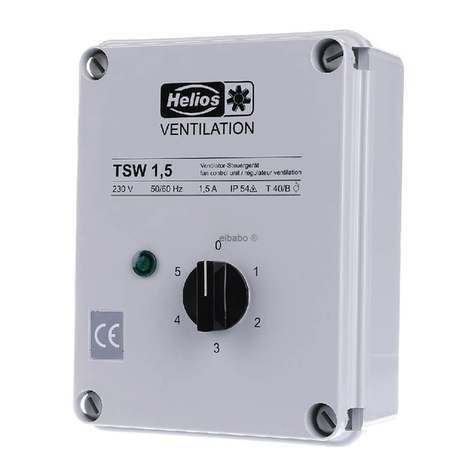
Helios
Helios TSD 0,8 Installation and operating instructions
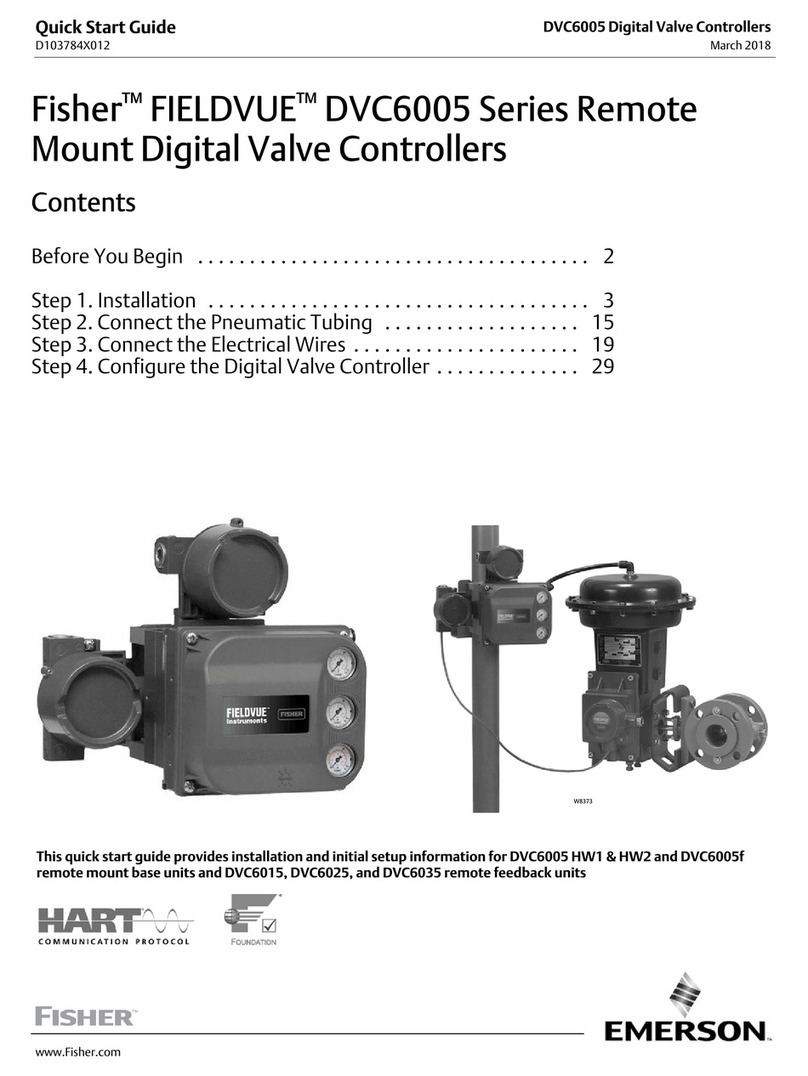
Emerson
Emerson Fisher FIELDVUE DVC6005 Series quick start guide
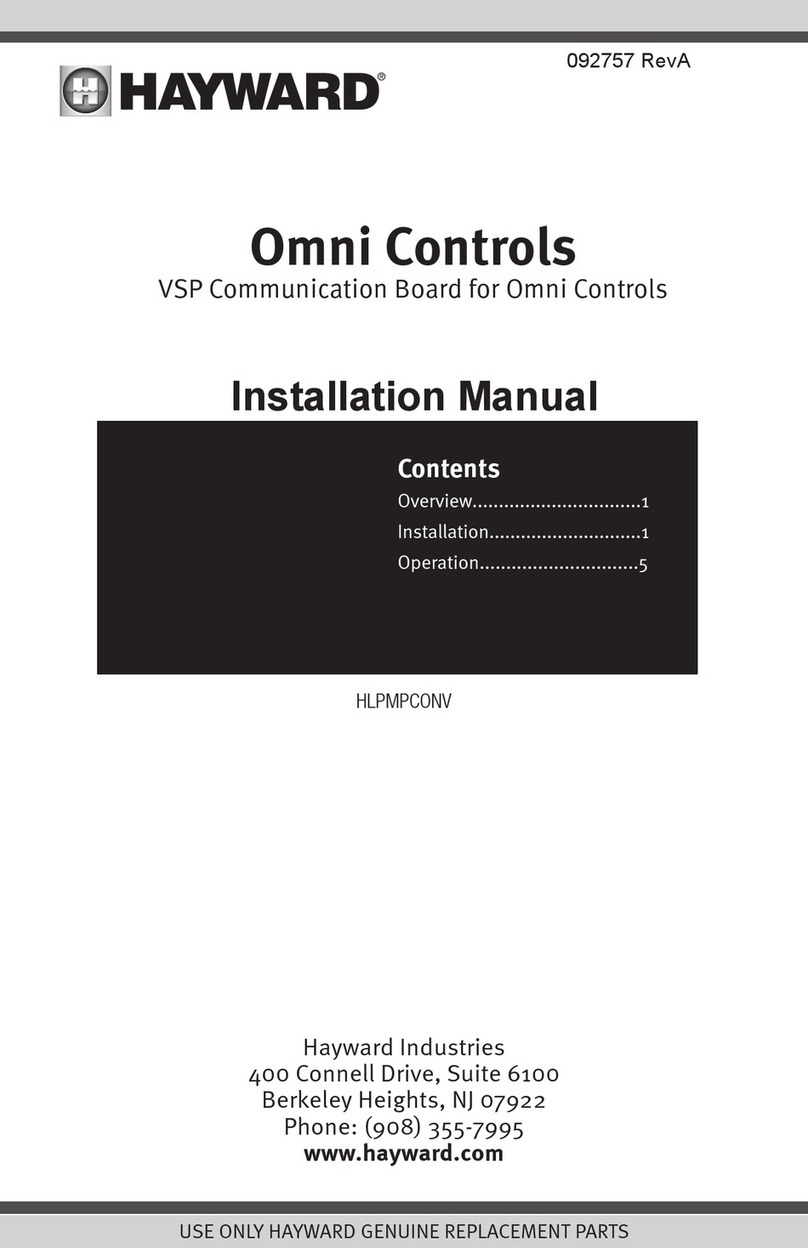
Hayward
Hayward HLPMPCONV installation manual
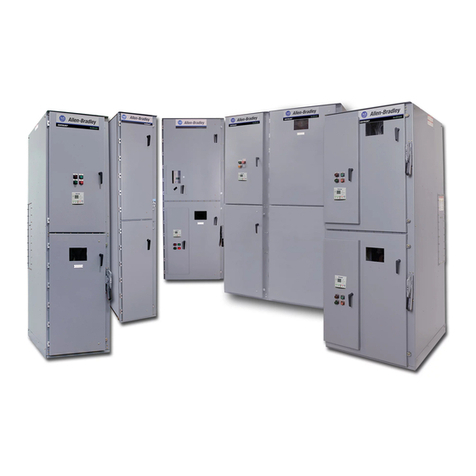
Rockwell Automation
Rockwell Automation Allen-Bradley 1512A user manual
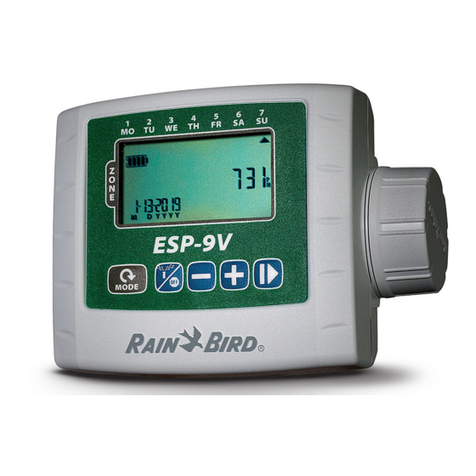
Rain Bird
Rain Bird ESP-9V user manual

Inter-m
Inter-m IPA-100 Operation manual
